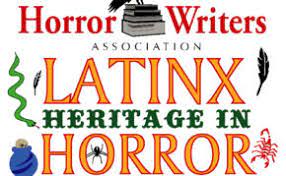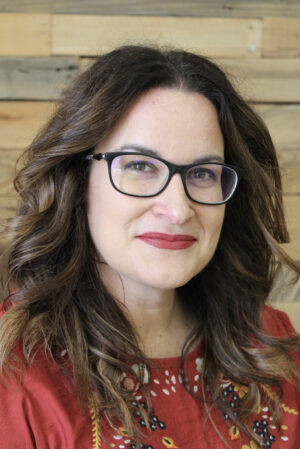
What inspired you to start writing?
My fourth-grade teacher recognized my ADHD tendencies to constantly daydream and make up stories and encouraged me to write them down. While it took me a while to claim the professional title of author, I have been writing ever since then as storytelling seems to be what my brain is wired to do.
Tell us about your work in 25 words or less.
The No-Brainer’s Guide to Decomposition is a middle-grade horror that invites young readers to explore the world of forensic anthropology through zombies and humor.
What was it about the horror genre that drew you to it?
Part of my enthusiasm for horror is nostalgic as my father took me to see Aliens when I was way too young to even be in that theater. But the nature of horror, with its high tension, strong emotions, and visceral imagery, fits how my brain needs to consume stories to maintain my interest.
Do you make a conscious effort to include LatinX characters and/or themes in your writing and if so, what do you want to portray?
I’m not making any more conscious an effort to include latine characters in my books than white writers are making to include white characters in theirs. I’m simply writing my experiences and what I know. I’m showing young readers that latine characters can be heroes and save the day and that their stories don’t always have to be ones of pain and struggle.
How have you seen the horror genre change over the years? And how do you think it will continue to evolve?
Every time I visit a school for an author presentation and ask students about their favorite genre, horror is always one of the top genres. Kids right now are craving these types of stories. But although young readers crave these kinds of stories, horror books have to make it past gatekeepers who tend not to be as enthusiastic about the genre. Thankfully, the horror genre in children’s literature has continued to grow and include stories from a wider range of cultures and experiences. I hope this won’t just be a brief trend in publishing.
Time to daydream: what are some aspects of LatinX history or culture – stories from your childhood, historical events, etc — that you really want our genre to tackle? (Whether or not you’re the one to tackle them!)
In children’s literature, latine authors have contributed excellent fantasy titles but haven’t quite delved fully into the horror genre, mostly because of publishing’s expectation from POC authors that our books pull heavily from our cultures to be “valid”. But I would love to see latine authors’ takes on traditional horror tropes. I also want to see more stories from underrepresented regions like South and Central America as well as stories from Afro-Latine authors.
Who are some LatinX horror authors you recommend our audience check out?
For children’s literature, I highly recommend The Cursed Moon by Angela Cervantes, The Keeper by Guadalupe Garcia McCall, The Supernatural Society by Rex Ogle, and It Happened to Anna by Tehlor Kay Mejia. For younger audiences, the 13th Street chapter book series by David Bowles is fantastic.
What is one piece of advice you would give horror authors today?
For horror authors writing for children, you don’t need to hold back. Kids love truly scary stories and don’t want to be pandered to. They’re ready to tackle tough subjects using horror as the vehicle. But remember that no matter the chills or scares, no matter the heavy themes, children’s stories are always buoyed by hope.
What is one piece of craft advice you’ve gotten that has really worked for you? Alternatively, what’s one that you’ve happily rejected?
The best piece of advice I received came from fellow spooky book author Fleur Bradley. I always have trouble not hyper-focusing on my manuscripts, trying to hit daily word counts that are way too high, or rushing to finish the overall manuscript too quickly. This always leads to creative burnout and low quality. Fleur encouraged me to set low, easily achievable word counts that I didn’t even have to work on daily. It sounds simple but this totally went against my hyper-focus tendencies, helping me craft better manuscripts and take more risks with my writing. As for something I rejected, when I first started writing, I thought I had to write at a desk, in a notebook, in silence. I soon found that was absolute torture for my ADHD brain. So, I happily write sitting on my couch, on my laptop, while I watch TV.
And to the LatinX writers out there who are just getting started, what advice would you give them?
You are enough. You are latine enough exactly as you are and you don’t have to perform your culture for anyone. Write your stories and your characters exactly how you want, the industry be damned.
 Adrianna Cuevas is the author of the Pura Belpre honor book The Total Eclipse of Nestor Lopez, the Edgar Award-winning The Ghosts of Rancho Espanto, and many other popular middle-grade titles. She is a first-generation Cuban-American originally from Miami, Florida. A former Spanish and ESOL teacher, Adrianna currently resides outside of Austin, Texas with her husband and son. When not substitute teaching at her local high school, cheering for the Florida Panthers hockey team, and setting off the smoke alarm in her kitchen, she is writing her next middle-grade novel.
Adrianna Cuevas is the author of the Pura Belpre honor book The Total Eclipse of Nestor Lopez, the Edgar Award-winning The Ghosts of Rancho Espanto, and many other popular middle-grade titles. She is a first-generation Cuban-American originally from Miami, Florida. A former Spanish and ESOL teacher, Adrianna currently resides outside of Austin, Texas with her husband and son. When not substitute teaching at her local high school, cheering for the Florida Panthers hockey team, and setting off the smoke alarm in her kitchen, she is writing her next middle-grade novel.

